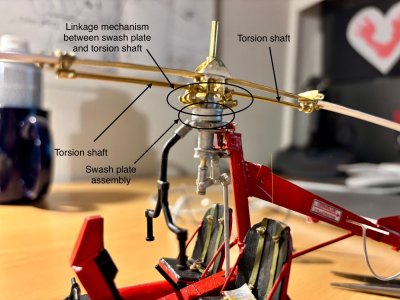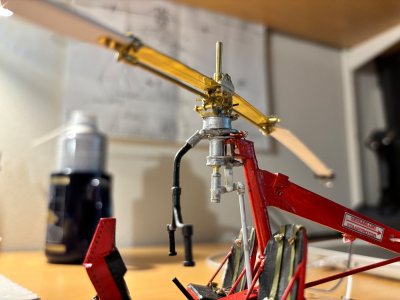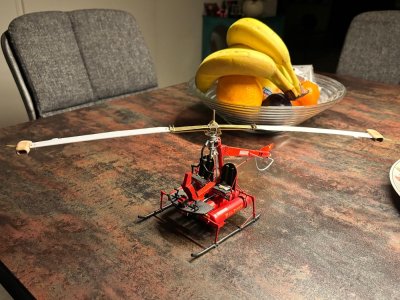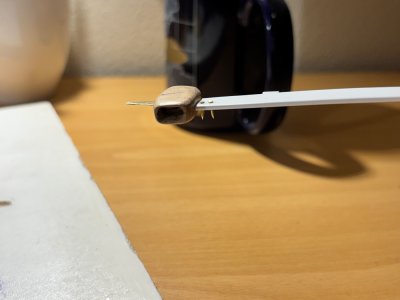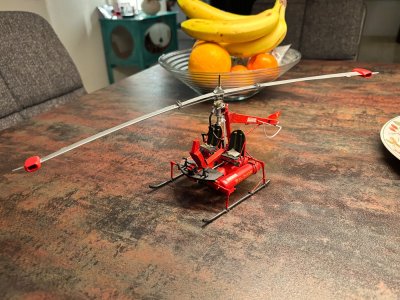Yesterday and today saw some paint work on the rotor and engines of the Kolibrie.
Before I got to this step, I thought long and hard about which colors to use. As far as I know there is no overview available on which colors were originally used, the only references now being the NH-3 at Texel Airport and the restored example in Israël.
Very risky and not very scientific, but the rotor blades of both seam to have a bare metal finish. The engines: on the Dutch Kolibrie they are painted green, whereas the Israeli example shows the engines with a metallic finish.
I could live with the metallic finish of the rotor blades, the engines however were a different story. Painting them green didn't seem very attractive to me, a metallic finish didn't appeal either. After juggling the options for a while I decided to paint the engines the same color as the rest of the airframe: red.
I'm very much aware of the fact that my decision is not supported by any evidence, either pictorial or in writing, so I invoke AL-FI.
Below the results of some airbrush activities on the rotor and the engines. The learning curve for airbrush is steeper than I thought...
 View attachment 553535
View attachment 553535





